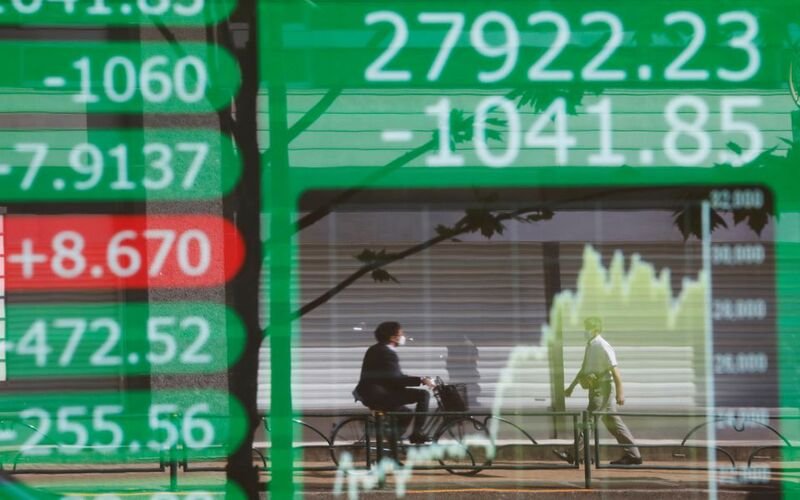Asia shares cheered by hopes of early rate cuts. After markets priced in early rate reductions in the U.S. and Europe, Asian equities rose for a fourth consecutive day on Monday. This week, a plethora of central bank speakers will put these gains to the test.
Battered bond markets also saw a welcome rebound, as positive productivity data and a tame U.S. payrolls report suggested that the labor market was cooling sufficiently to prevent any rate hikes by the Federal Reserve.
“There are expectations for a soft landing given this year’s better-than-expected U.S. supply-side performance,” stated Bruce Kasman, head of JPMorgan’s economic research division. “By encouraging disinflation, strong productivity, and labor supply gains, we might allow for job growth and low inflation to coexist,” he stated. “This, in turn, would open the path for early Fed easing.”
Futures markets suggested a 90% likelihood that rate hikes by the Fed were over and an 86% chance that the first policy easing would occur as soon as June. Additionally, markets suggest an 80% chance that the European Central Bank will lower interest rates by April and that the Bank of England will do the same in August.
Central bankers, including Chair Jerome Powell, can comment on this dovish perspective this week when at least nine Fed members speak. Speakers from the ECB and BoE are also scheduled.
Australia’s central bank stands out since it is expected to continue hiking rates at its policy meeting on Tuesday despite the country’s persistently high inflation rate.
Though slowly, the Bank of Japan is likewise moving toward tightening. The governor of the central bank stated on Monday that although they were getting closer to hitting their inflation target, the ultra-loose policy was still in place. In other news, the MSCI broadest index of Asia-Pacific equities outside of Japan (.MIAPJ0000PUS), which had already risen 2.8% the previous week and was moving away from one-year lows, gained 2.0% on expectations for reduced borrowing rates.
Japan’s Nikkei (.N225) increased by 2.4% after rising by 3.1% the previous week, and South Korea’s (.KS11) gained 4.3% due to the authorities’ decision to reinstate the prohibition on short sales until mid-2024.
The CSI300 index of Chinese blue chips increased 1.3% ahead of this week’s expected trade and inflation reports. Futures for the S&P 500 and the Nasdaq were both unchanged. While FTSE futures hardly changed, EURO STOXX 50 futures saw a 0.1% increase.
RELIABLE BONDS
The yield on two-year Treasury bonds stopped growing last week, dropping 17 basis points to 4.86%. The yield on 10-year notes was 4.586%, a significant decrease from the agonizing top of 5.021% in October.
According to a note from NatWest Markets, “Our view remains that rate cuts from the Fed, ECB, and BoE will come a little sooner than markets are pricing them and, in the initial phases, are likely to be bolder in terms of size.” “We look for the Fed Funds rate to fall to 3-3.25%, the ECB depo rate to be 3%, and the BoE Bank rate to be 4.25% by the end of 2024.”
The dollar, which had dropped 1.3% last week to its lowest level since late September, remained trapped at 105.080 until Treasury rates began to decline.
The euro held steady at $1.0735 after reaching a two-month high of 1% on Friday. Even still, the dollar lost ground to the struggling yen, closing the week at 149.52, much below its previous peak of 151.74.
The decline in the dollar and interest rates helped to support gold, which was trading at $1,983, not far from the previous five-month high of $2,009.
Following a 6% decline the previous week, oil prices gradually increased as it became inevitable that Russia and Saudi Arabia would stick to their extra-voluntary oil supply restrictions.
According to military experts, troops in the Middle East are about to step up their operations against Hamas, a Palestinian Islamist organization, after Israel rejected the increasing number of pleas for a truce in Gaza on Sunday.
While U.S. crude increased 54 cents to $81.05 per barrel, Brent jumped 43 cents to $85.32 per barrel.













































Comment Template